We may earn money from the products/companies mentioned in this post. As an Amazon Associate I earn from qualifying purchases.
Move over spuds, this Instant Pot Mashed Cauliflower recipe is loaded with flavor. Light in carbs but full of savory flavors. Garlic, butter, sour cream, parmesan and more come together to give you one of the best mashed cauliflower recipes ever.
Whether you are looking for a holiday side dish or a weeknight dinner side, this cauliflower recipe fits the bill. The perfect low carb alternative to mashed potatoes.
Check out these keto garlic biscuits or try this low carb cheesy squash casserole to round out your meal.
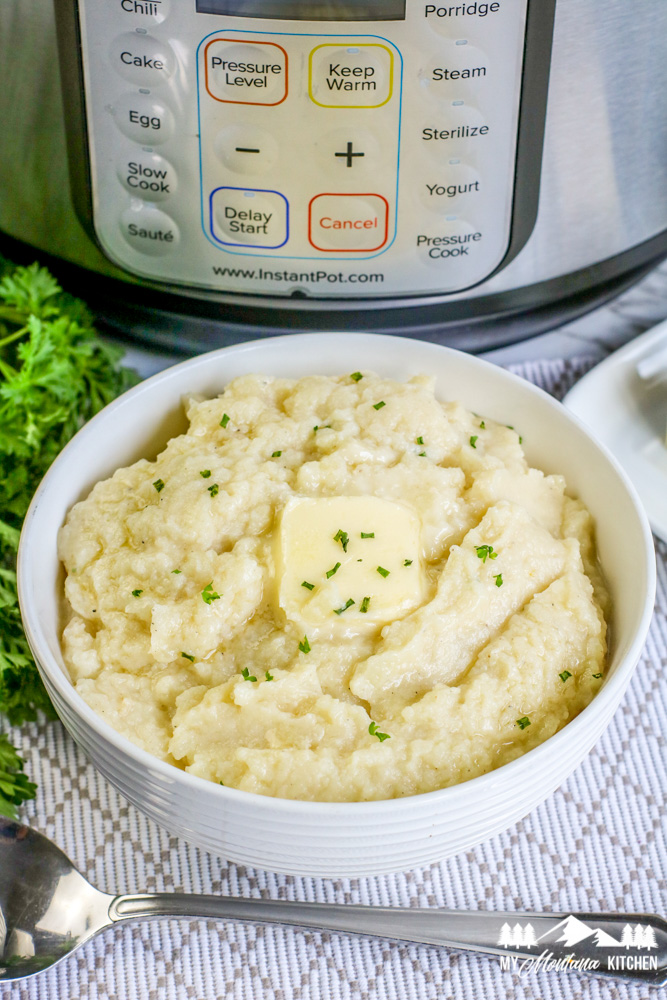
Instant Pot Mashed Cauliflower
The high pressure from the Instant Pot allows the cauliflower to become very tender, and making it a nice mashable consistency that is so delicious. Add in all the other ingredients and you have a side dish that will taste incredible.
How to Pick Cauliflower
When picking a cauliflower head at the store you will want to look for a white colored head. Then ensure it is firm in texture, no soft spots or areas that are browning, and looks healthy.
For this recipe you will use the florets of the cauliflower only. So you will want to wash, prep, and then cut up your cauliflower so you only have the florets.
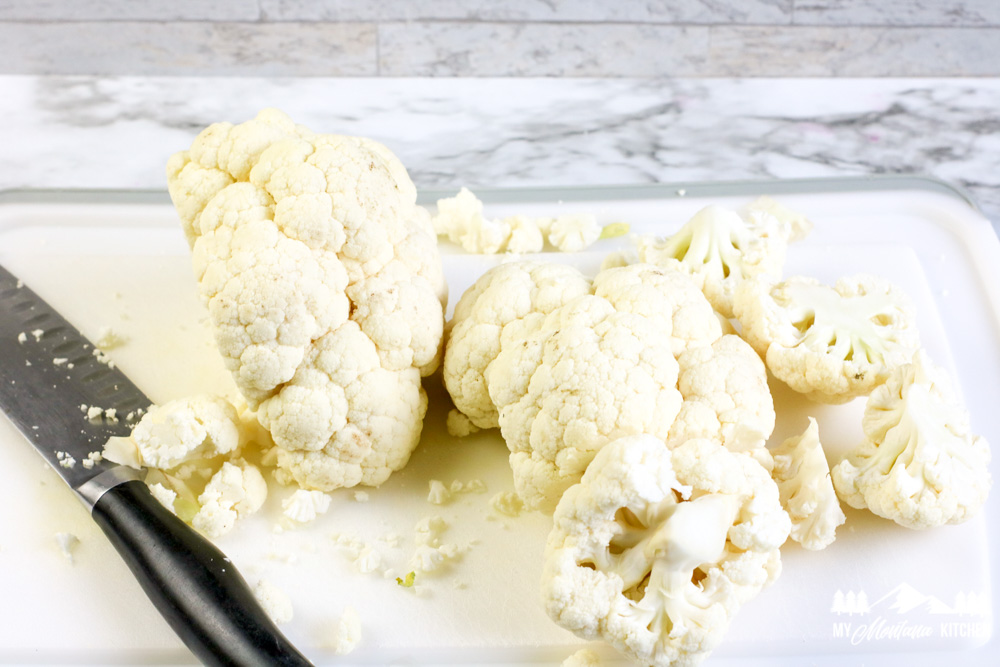
How to Make Instant Pot Mashed Cauliflower
Using your Instant Pot to make mashed cauliflower really simplifies the process. You will start by turning your pressure cooker to saute and adding in the oil and garlic.
Get it browned and allow the fragrance of the garlic to release. This will add a nice warmth of savory flavors to your cauliflower mash.
Turn the saute mode off, add water and use a wooden spatula to scrape the bottom to ensure no stuck on garlic is on the bottom of the pot, or you will get a burn notice.
Next grab your steamer basket add in your cauliflower and cook accordingly. It is important to allow your cauliflower to naturally release for 10 minutes once your cooking time is up.
Then after you will transfer to a food processor with other ingredients and mix until creamy and well combined.
How Long Does It Take An Instant Pot To Come To Pressure
When using your Instant Pot you have to remember to add on time for your food to come to pressure before the timer starts.
This means that once you close the lid and close the sealing valve it can take anywhere from 5-20 minutes to pressurize before it begins cooking.
Most generally you will find vegetables and such are shorter pressure time, and meats and frozen recipes can take longer like 15-20 minutes.
So always add in pressurizing time when you start cooking, as a lot of recipes don't include the pressure-time because every pressure cooker will vary in terms of how short or long it takes to pressurize.
Why Is My Cauliflower Mash Watery?
If you run into your cauliflower mash turning out a bit watery, you can thicken it. You can thicken your mixture by allowing it to cook down a bit more in the Instant Pot or even a skillet on the stove.
I always recommend going light on adding liquid ingredients into your cauliflower mash, that way you can control how thick or thin your mixture becomes.
If you find you run into too thick mashed cauliflower, simply add more liquid. Whether that be chicken stock, some cream, or even a tad bit of water.
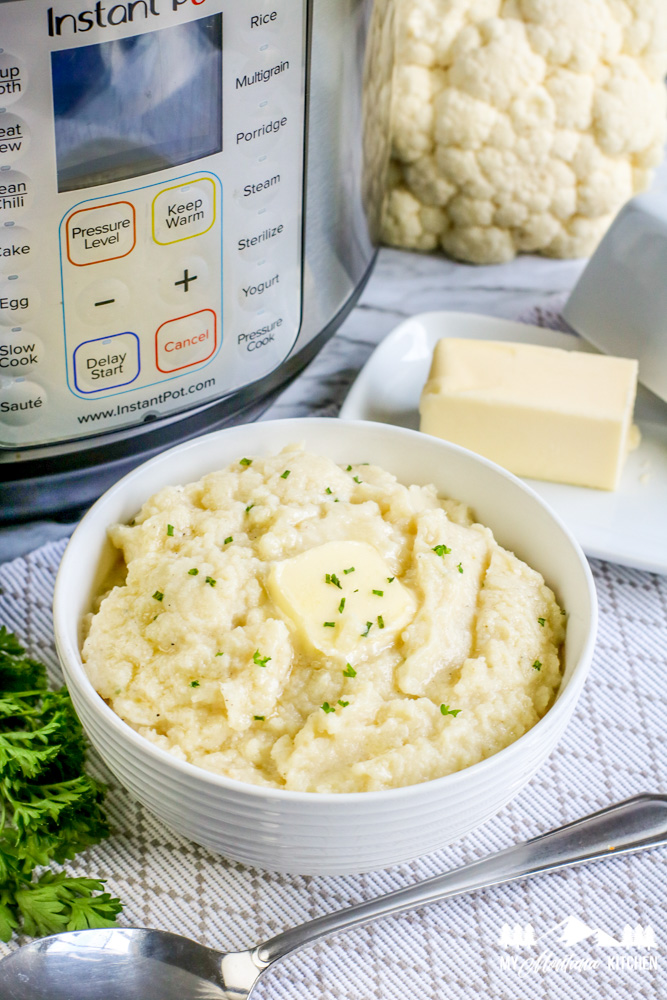
Interested in more Cauliflower Recipes
Storing Leftover Cauliflower Mash
If you happen to have leftovers, go ahead and store your leftovers in the fridge for up to 3-4 days. It will thicken a bit as it chills so you might add a little more liquid as you reheat to thin it out a bit.
Or go right ahead and freeze your cauliflower mash for up to three months.
Put it in a freezer bag and then store flat so it takes up minimal room.
Run the bag under water and then warm up on the stove or allow the mixture to thaw in the fridge overnight before you go to reheat this easy side.
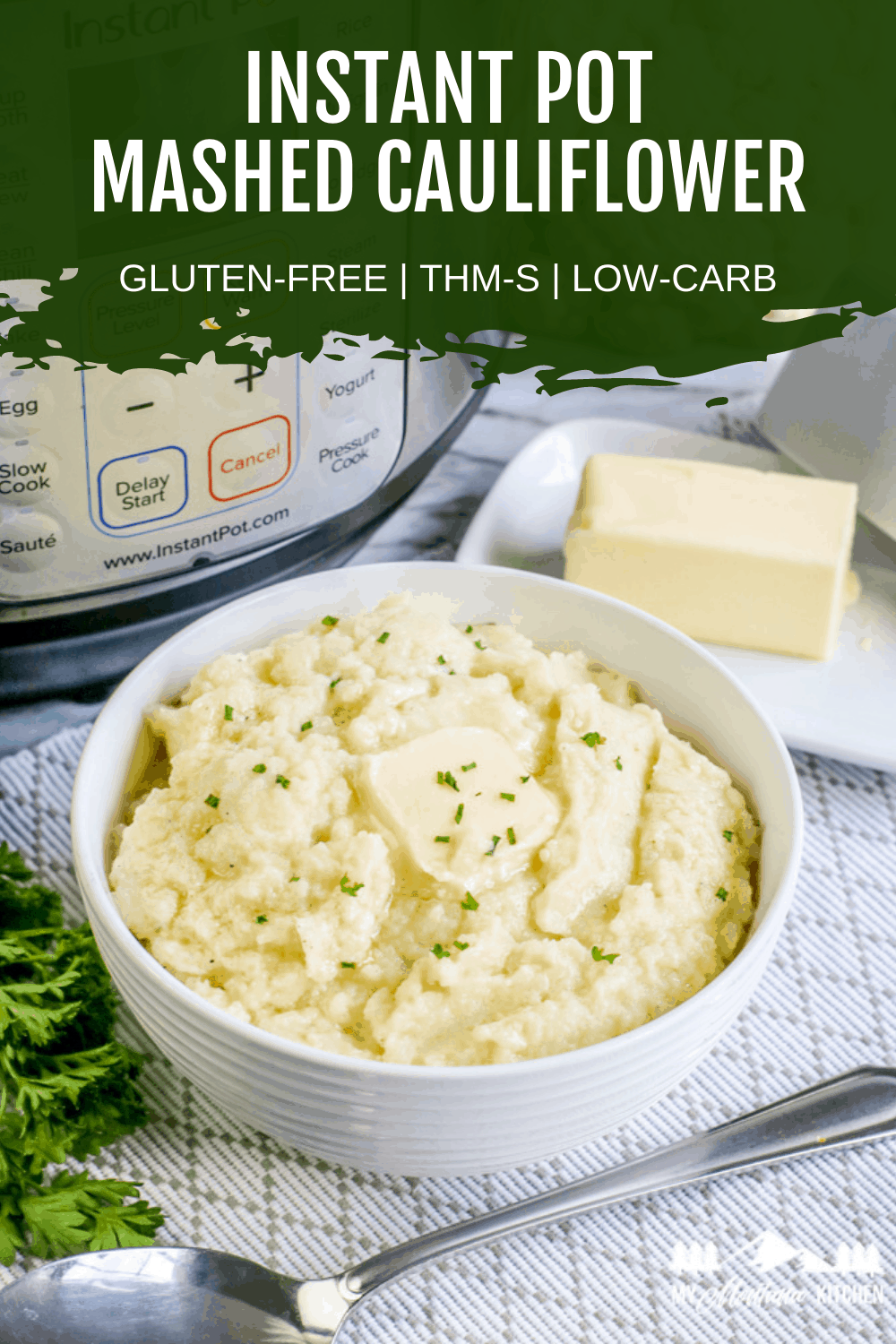
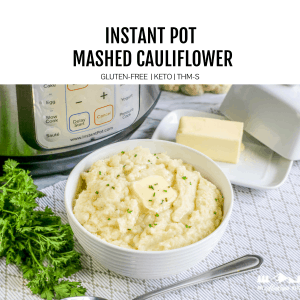
Instant Pot Mashed Cauliflower
Ingredients
- 1 ½ large heads cauliflower florets only
- 1 tablespoon olive oil
- 8 cloves garlic peeled and smashed
- 1 ½ cups water
- 1 tablespoon butter
- 2 tablespoons sour cream
- 1 teaspoon salt
- ½ teaspoon fresh ground pepper or to taste
- ¾ cup grated parmesan cheese
Instructions
- Set the electric pressure cooker to “saute.” When hot, add the olive oil and garlic. Cook the garlic until browned on both sides. Add the water. Cancel the saute mode.
- Place the cauliflower florets in a steamer basket. Lower the steamer basket into the electric pressure cooker.
- Cover and seal the electric pressure cooker. Set on “manual” or “pressure cook” for 3 minutes. Allow the pressure cooker to naturally release the steam for 10 minutes before a quick release of the remaining pressure.
- Transfer the cauliflower to a large bowl or food processor and all the remaining ingredients. Blend until smooth.
Nutrition



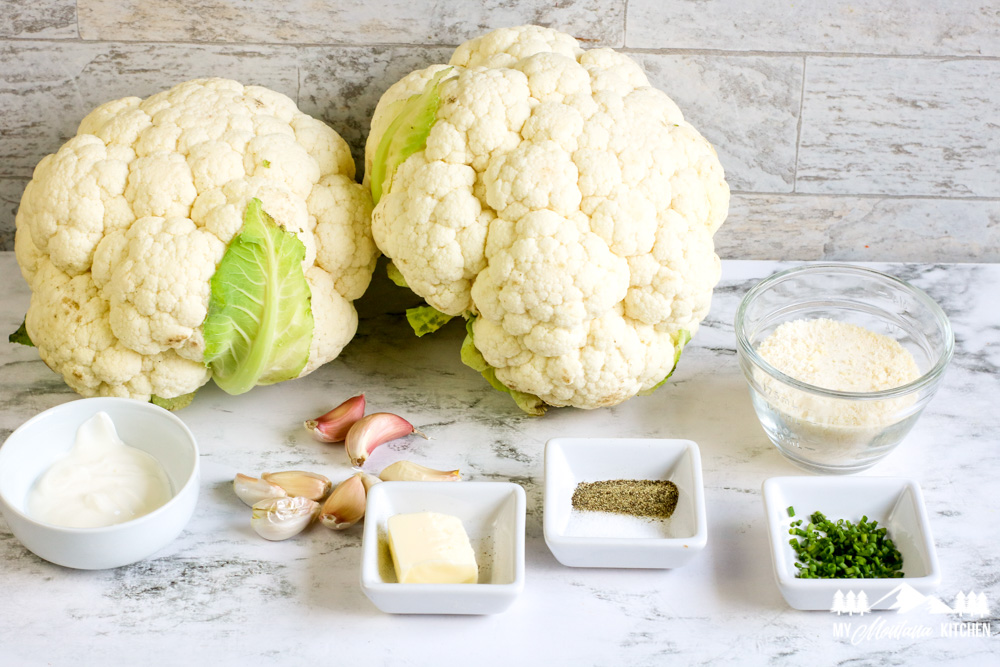
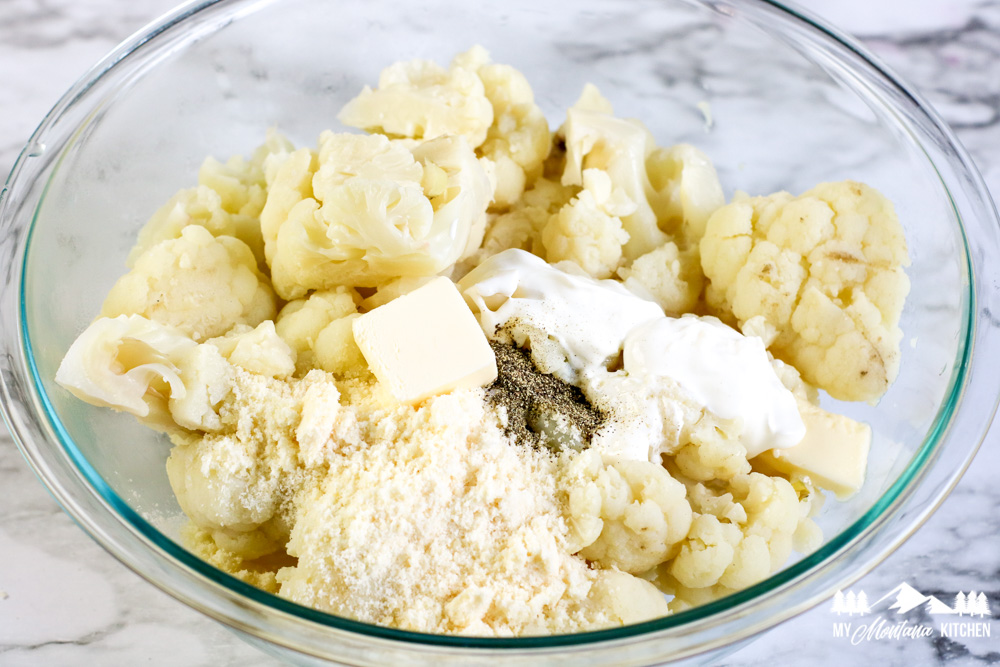
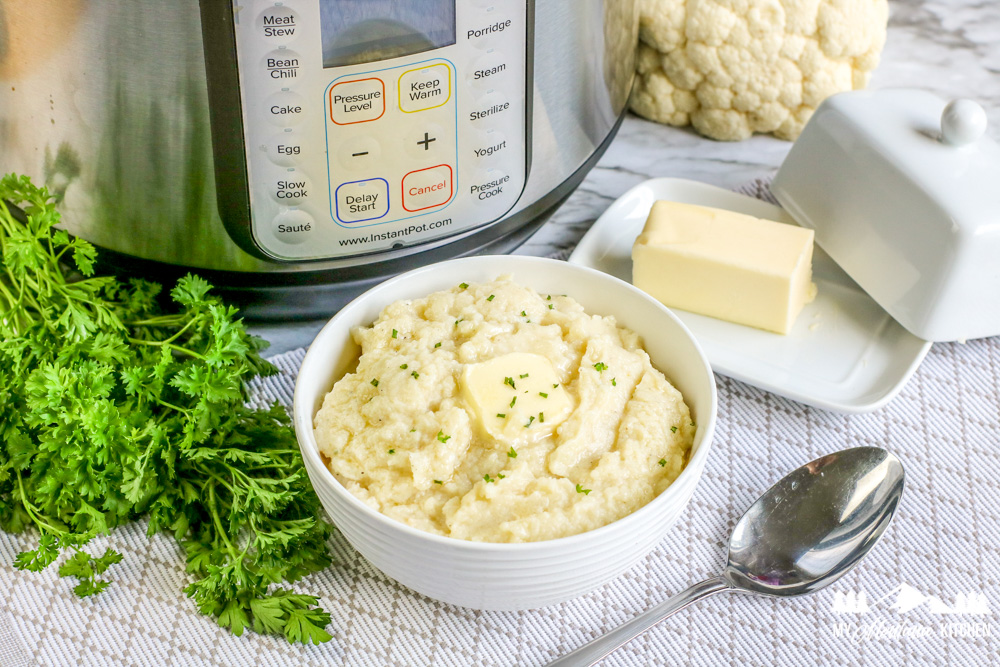
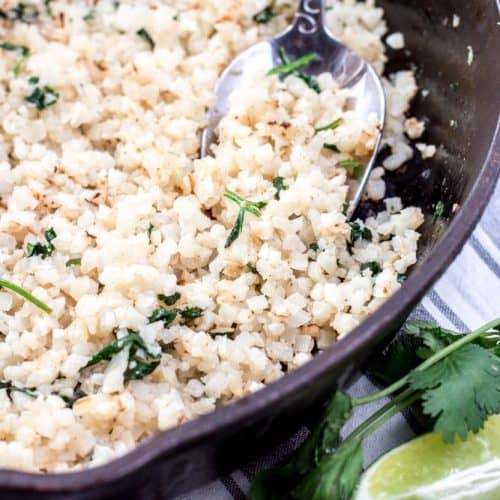
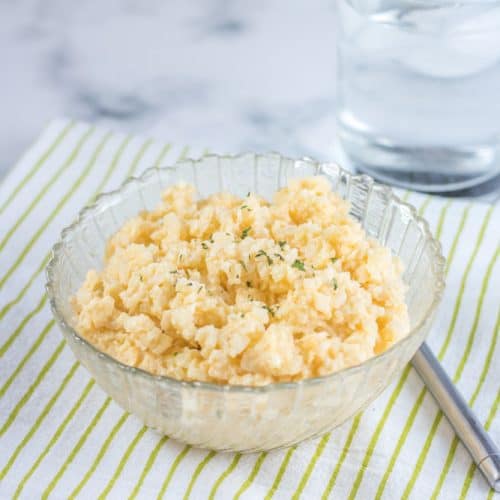

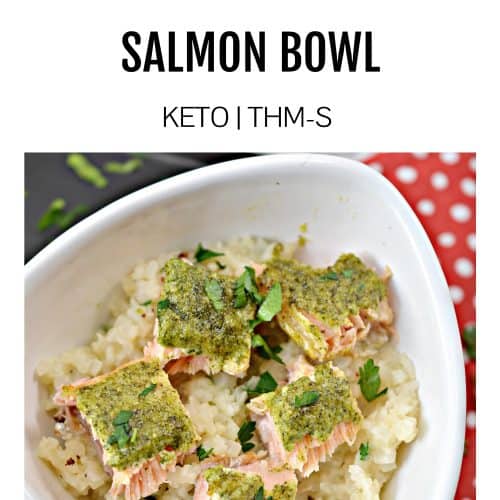
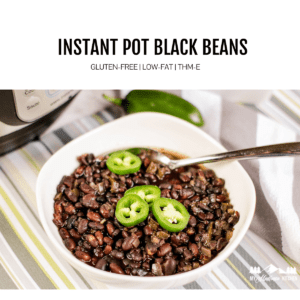



Cindy
Do you think this would work using frozen 'riced' cauliflower? (I've bought bags of it but we haven't yet accepted it as my rice replacement).
Sarah Hardy
No, for this recipe it is best to use the fresh florets.
Jama Joyner
I've tried a lot of mashed cauy recipes over the past 6 years. You knocked it out of the park. I will never try another!
Joanne
Can this be done in a crockpot?
Sarah Hardy
Yes, I would think so!
Sharon
This is the first recipe I'm reading, so I don't know if there is a pattern but I find the Nutrition values difficult to understand. I really want to try it!
Nutrition
Serving: 6g | Calories: 134kcal | Carbohydrates: 9g | Protein: 6g | Fat: 9g | Fiber: 3g
Is this 6 servings or 6g is a serving, which seems little. And the rest of the values pertaining to all 6 servings or only per serving.
Thanks
Sarah Hardy
Hi Sharon, this recipe makes 6 servings. All the rest of the values are per serving.
Judy
How many serving does this make? Can you do it without an insta pot?
Sarah Hardy
This makes 6 servings. And yes, you can steam the cauliflower on the stove-top, then follow the instructions for mashing!
Natasha
Do you remove the saluted garlic before adding water andsteaming the cauliflower?
Sarah Hardy
No, you can leave it in the bottom of the pot.